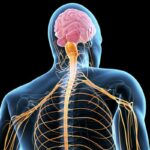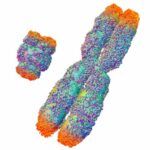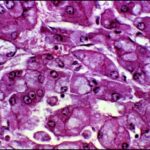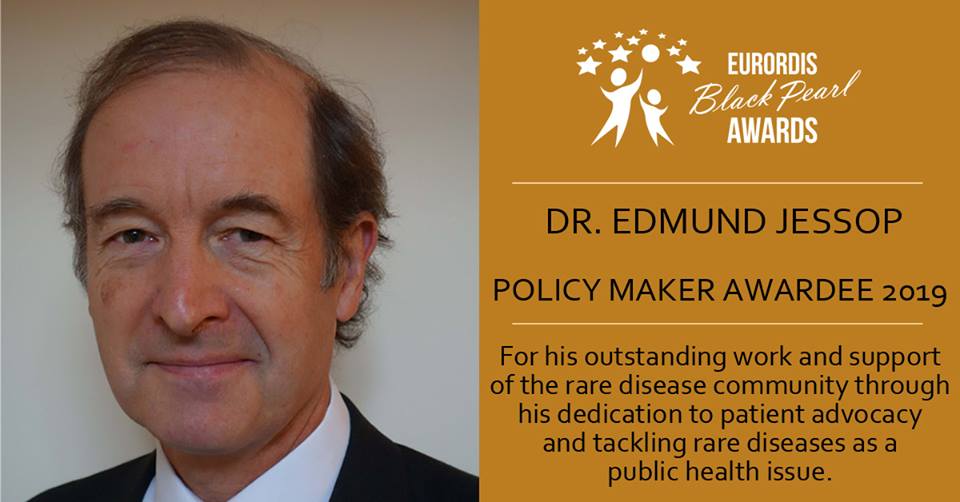 To characterize the timing and pathway of amyotrophic lateral sclerosis (ALS) diagnosis and to identify predictors of delayed diagnosis in a retrospective cohort. The cohort included all patients with incident ALS between 2010 and 2014 in Friuli-Venezia Giulia (FVG) region, Italy, admitted to two University Hospitals. Information on demographics, clinical presentation, and healthcare use was obtained from health databases and electronic medical records (EMRs). Total diagnostic time (TDT), the interval between ALS symptoms onset and diagnosis, was compared between patient groups through Wilcoxon-Mann-Whitney test. In this cohort, delayed diagnosis was common, particularly in older patients and in those with neurological comorbidities. Timely referral to a neurologist may improve diagnostic timing. The full article and the detailed results from the cohort study you can find here.
To characterize the timing and pathway of amyotrophic lateral sclerosis (ALS) diagnosis and to identify predictors of delayed diagnosis in a retrospective cohort. The cohort included all patients with incident ALS between 2010 and 2014 in Friuli-Venezia Giulia (FVG) region, Italy, admitted to two University Hospitals. Information on demographics, clinical presentation, and healthcare use was obtained from health databases and electronic medical records (EMRs). Total diagnostic time (TDT), the interval between ALS symptoms onset and diagnosis, was compared between patient groups through Wilcoxon-Mann-Whitney test. In this cohort, delayed diagnosis was common, particularly in older patients and in those with neurological comorbidities. Timely referral to a neurologist may improve diagnostic timing. The full article and the detailed results from the cohort study you can find here.
Featured posts
Changes in the cohort composition of Turner syndrome and severe non-diagnosis of Klinefelter
 Knowledge on the prevalence of sex chromosome abnormalities (SCAs) is limited, and delayed diagnosis or non-diagnosis of SCAs are a continuous concern. We aimed to investigate change over time in incidence, prevalence and age at diagnosis among Turner syndrome (TS), Klinefelter syndrome (KS), Triple X syndrome (Triple X) and Double Y syndrome (Double Y). The Danish Cytogenetic Central Registry (DCCR) holds information on all karyotypes performed in Denmark since 1961. We identified all individuals in the DCCR with a relevant SCA during 1961-2014; TS: n = 1156; KS: n = 1235; Triple X: n = 197; and Double Y: n = 287. From Statistics Denmark, which holds an extensive collection of data on the Danish population, complete data concerning dates of death and migrations in and out of Denmark were retrieved for all individuals.
Knowledge on the prevalence of sex chromosome abnormalities (SCAs) is limited, and delayed diagnosis or non-diagnosis of SCAs are a continuous concern. We aimed to investigate change over time in incidence, prevalence and age at diagnosis among Turner syndrome (TS), Klinefelter syndrome (KS), Triple X syndrome (Triple X) and Double Y syndrome (Double Y). The Danish Cytogenetic Central Registry (DCCR) holds information on all karyotypes performed in Denmark since 1961. We identified all individuals in the DCCR with a relevant SCA during 1961-2014; TS: n = 1156; KS: n = 1235; Triple X: n = 197; and Double Y: n = 287. From Statistics Denmark, which holds an extensive collection of data on the Danish population, complete data concerning dates of death and migrations in and out of Denmark were retrieved for all individuals.
The prevalence of TS is higher than previously identified, and the karyotypic composition of the TS population is changing. Non-diagnosis is extensive among KS, Triple X and Double Y, whereas all TS seem to become diagnosed. The full article and the detailed results from the cohort study you can find here.
 Glycogen storage disease (GSD) types VI and IX are rare diseases of variable clinical severity affecting primarily the liver. GSD VI is caused by deficient activity of hepatic glycogen phosphorylase. GSD IX is caused by deficient activity of phosphorylase kinase (PhK). Glycogen storage disease types VI and IX have a wide spectrum of clinical manifestations and often cannot be distinguished from each other, or from other liver GSDs. A national group of experts in various aspects of GSDs VI and IX met to review the limited evidence base from the scientific literature and provided their expert opinions. Consensus was developed in each area of diagnosis, treatment, and management.
Glycogen storage disease (GSD) types VI and IX are rare diseases of variable clinical severity affecting primarily the liver. GSD VI is caused by deficient activity of hepatic glycogen phosphorylase. GSD IX is caused by deficient activity of phosphorylase kinase (PhK). Glycogen storage disease types VI and IX have a wide spectrum of clinical manifestations and often cannot be distinguished from each other, or from other liver GSDs. A national group of experts in various aspects of GSDs VI and IX met to review the limited evidence base from the scientific literature and provided their expert opinions. Consensus was developed in each area of diagnosis, treatment, and management.
A guideline that will facilitate the accurate diagnosis and optimal management of patients with GSDs VI and IX was developed. This guideline will help health-care providers recognize patients with GSDs VI and IX, expedite diagnosis, and minimize adverse sequelae from delayed diagnosis and inappropriate management. It will also help identify gaps in scientific knowledge that exist today and suggest future studies. The full article you can find here.
 The objective of this article is to explore the role of smoking and obesity in primary Sjögren syndrome (pSS). Olmsted County (Minnesota, USA) residents (n = 106) diagnosed with pSS from 2000 to 2015 were compared to 3 controls without pSS and matched for age and sex who were randomly selected from Olmsted County residents. Current smokers were less likely to be pSS cases (OR 0.34, 95% CI 0.14-0.85), while there was no association between former smoking and case/control status (OR 1.27, 95% CI 0.80-2.03) compared to never smokers. Smoking status was not associated with antinuclear antibody, anti-SSA, anti-SSB, or rheumatoid factor positivity (p > 0.05). OR for obesity was 0.79 (95% CI 0.48-1.30). In this population-based study, current smoking was inversely associated with case/control status, while body mass index lacked any association. The full article you can find here.
The objective of this article is to explore the role of smoking and obesity in primary Sjögren syndrome (pSS). Olmsted County (Minnesota, USA) residents (n = 106) diagnosed with pSS from 2000 to 2015 were compared to 3 controls without pSS and matched for age and sex who were randomly selected from Olmsted County residents. Current smokers were less likely to be pSS cases (OR 0.34, 95% CI 0.14-0.85), while there was no association between former smoking and case/control status (OR 1.27, 95% CI 0.80-2.03) compared to never smokers. Smoking status was not associated with antinuclear antibody, anti-SSA, anti-SSB, or rheumatoid factor positivity (p > 0.05). OR for obesity was 0.79 (95% CI 0.48-1.30). In this population-based study, current smoking was inversely associated with case/control status, while body mass index lacked any association. The full article you can find here.
 In the daily routine of the dental practitioners there are patients with blood disorders and the most common coagulopathy is haemophilia. The aim of this article is to analyze data from publications exploring the oral status and the causes that could lead to oral haemorrhage in patients with haemophilia. A systematic search was conducted in PubMed database for all available publications until December 2018 that examined the oral status and the causes that could lead to oral haemorrhage in children and adults with haemophilia. It is approved that there is no significant difference between adult patients with haemophilia and their control groups and the oral status of the children with hemophilia is better. Compared to healthy controls, patients experience greater bleeding of the gingiva at rest and dental invasive manipulations. Therefore for prevention of the complications should be provided clinical guidelines for the dental procedures. The full article you can read on the latest issue of our journal “Rare diseases and orphan drugs” here.
In the daily routine of the dental practitioners there are patients with blood disorders and the most common coagulopathy is haemophilia. The aim of this article is to analyze data from publications exploring the oral status and the causes that could lead to oral haemorrhage in patients with haemophilia. A systematic search was conducted in PubMed database for all available publications until December 2018 that examined the oral status and the causes that could lead to oral haemorrhage in children and adults with haemophilia. It is approved that there is no significant difference between adult patients with haemophilia and their control groups and the oral status of the children with hemophilia is better. Compared to healthy controls, patients experience greater bleeding of the gingiva at rest and dental invasive manipulations. Therefore for prevention of the complications should be provided clinical guidelines for the dental procedures. The full article you can read on the latest issue of our journal “Rare diseases and orphan drugs” here.
Influence of chronic anemic stateon spinal bone mineral density in patients with transfusion dependent beta-thalassemia over 18 years of age
 This study aims to analyze BMD at spinal level L1-L4 depending on the severity of anemic state in TDBT patients. Between May 2017 and June 2018 our team studied 62 adult patients with TDBT. The mean age of the subjects was 30.7±10.0 years for women and 32±12.9 years for men with TDBT. Mean pre-transfusion Hb level was 80.4±10.6 g/l for females and 79.1±10.9g/l for males. Mean spinal BMD at the L1-L4 level, calculated as Z-score for women and men were -2.5±1.07 and -2.7±1.1 respectively. In both sexes mean pre-transfusion Hb correlated significantly with L1-L4 Z-scores. For any increase in mean pre-transfusion Hb level by 1 g/l, Z-scores at L1-L4l increased by 0.050 for males and 0.048 for females with TDBT. Pre-transfusion hemoglobin levels below the limit of 90 g/l adversely affect BMD in TDBT patients over the age of 18 years. In this sense, adherence to hypertransfusional program even when somatic growth is completed is crucial for preventing excessive bone loss. The whole article you can read on the latest issue of our journal “Rare diseases and orphan drugs” here.
This study aims to analyze BMD at spinal level L1-L4 depending on the severity of anemic state in TDBT patients. Between May 2017 and June 2018 our team studied 62 adult patients with TDBT. The mean age of the subjects was 30.7±10.0 years for women and 32±12.9 years for men with TDBT. Mean pre-transfusion Hb level was 80.4±10.6 g/l for females and 79.1±10.9g/l for males. Mean spinal BMD at the L1-L4 level, calculated as Z-score for women and men were -2.5±1.07 and -2.7±1.1 respectively. In both sexes mean pre-transfusion Hb correlated significantly with L1-L4 Z-scores. For any increase in mean pre-transfusion Hb level by 1 g/l, Z-scores at L1-L4l increased by 0.050 for males and 0.048 for females with TDBT. Pre-transfusion hemoglobin levels below the limit of 90 g/l adversely affect BMD in TDBT patients over the age of 18 years. In this sense, adherence to hypertransfusional program even when somatic growth is completed is crucial for preventing excessive bone loss. The whole article you can read on the latest issue of our journal “Rare diseases and orphan drugs” here.
 Rare cancers are an increasingly popular topic from research, clinical and public health perspectives. Cancer is indeed a major priority in modern healthcare and represents a nosological category of immense social significance. However, following the model of rare diseases, researchers are more and more interested in rare cancers. By combining the medico-social paradigm of rare diseases with the clinical profile of oncology, rare cancers have the potential to be a separate area of high added value actions. This publication aims to summarize the basic epidemiological concepts regarding rare cancers and to discuss their place in health policy. The whole article you can read on the latest issue of our journal “Rare diseases and orphan drugs” here.
Rare cancers are an increasingly popular topic from research, clinical and public health perspectives. Cancer is indeed a major priority in modern healthcare and represents a nosological category of immense social significance. However, following the model of rare diseases, researchers are more and more interested in rare cancers. By combining the medico-social paradigm of rare diseases with the clinical profile of oncology, rare cancers have the potential to be a separate area of high added value actions. This publication aims to summarize the basic epidemiological concepts regarding rare cancers and to discuss their place in health policy. The whole article you can read on the latest issue of our journal “Rare diseases and orphan drugs” here.
Producing an evidence-based treatment information website regarding multiple sclerosis (MS)
 It is identified that people affected by multiple sclerosis (MS) can have difficulty finding online treatment information that is up to date, trustworthy, understandable, and applicable to personal circumstances, but does not provoke confusion or negative emotional consequences. The objective was to develop online consumer summaries of MS treatment evidence (derived from Cochrane Reviews) that respond to identified treatment information needs of people affected by MS. Phase 1 included review panels with consumers (Australians affected by MS) and health professionals to test paper-based treatment summaries before development, and pilot testing of the website. Phase 2 involved an online survey after website launch. The full article you can find here.
It is identified that people affected by multiple sclerosis (MS) can have difficulty finding online treatment information that is up to date, trustworthy, understandable, and applicable to personal circumstances, but does not provoke confusion or negative emotional consequences. The objective was to develop online consumer summaries of MS treatment evidence (derived from Cochrane Reviews) that respond to identified treatment information needs of people affected by MS. Phase 1 included review panels with consumers (Australians affected by MS) and health professionals to test paper-based treatment summaries before development, and pilot testing of the website. Phase 2 involved an online survey after website launch. The full article you can find here.
 On 30th-1st of September 2018 in Grand Hotel Plovdiv was held the 9th National Conference for Rare Diseases. The newest achievements in the field of diagnostics, treatment, rehabilitation and social care for people with rare oncologic and hematologic disorders. Specialists in the field of oncology and hematology shared their experience and talked about new trends. Book of presentations and posters can be downloaded here.
On 30th-1st of September 2018 in Grand Hotel Plovdiv was held the 9th National Conference for Rare Diseases. The newest achievements in the field of diagnostics, treatment, rehabilitation and social care for people with rare oncologic and hematologic disorders. Specialists in the field of oncology and hematology shared their experience and talked about new trends. Book of presentations and posters can be downloaded here.
 Dr Edmund Jessop is the recipient of the EURORDIS Policy Maker Award in recognition of his outstanding work and support of the rare disease community through his dedication to patient advocacy and tackling rare diseases as a public health issue as public health lead of the National Commissioning Group and author of the reform on highly specialised care in the UK @NHSEngland
Dr Edmund Jessop is the recipient of the EURORDIS Policy Maker Award in recognition of his outstanding work and support of the rare disease community through his dedication to patient advocacy and tackling rare diseases as a public health issue as public health lead of the National Commissioning Group and author of the reform on highly specialised care in the UK @NHSEngland
Register to attend the Black Pearl Awards Ceremony on 12 February in Brussels: https://blackpearl.
